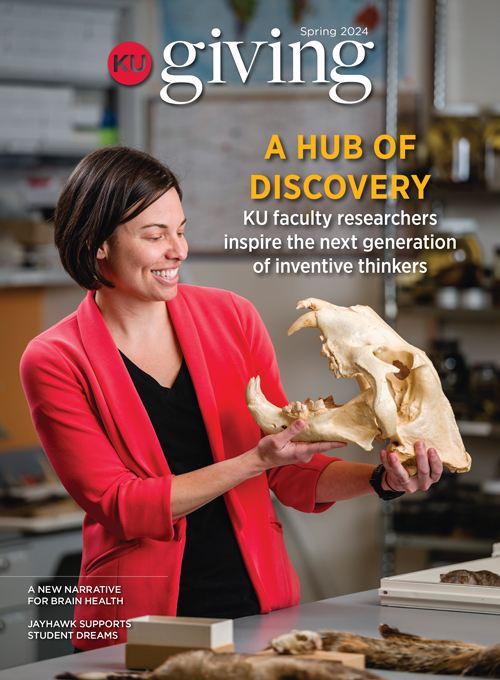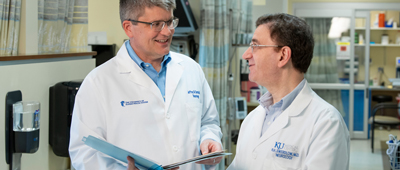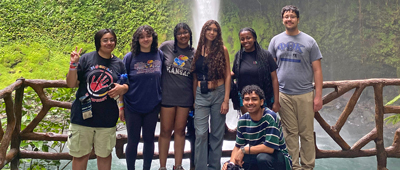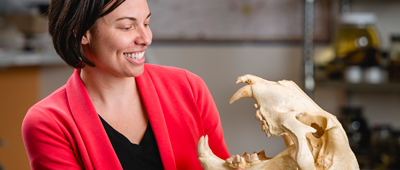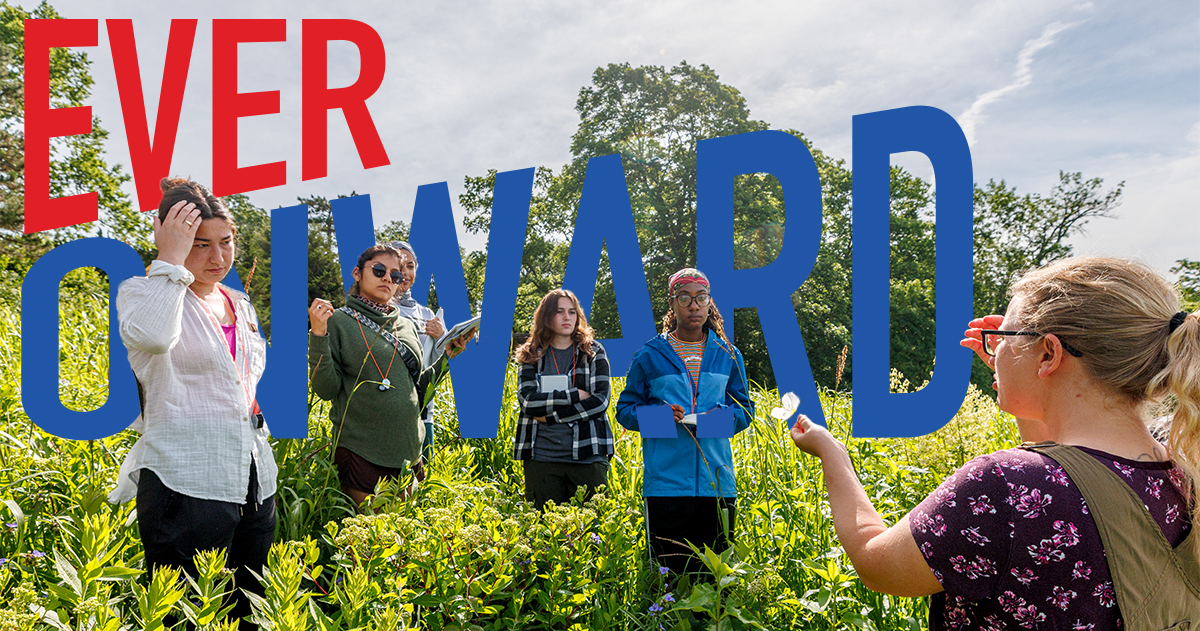KU Giving Magazine
Every Gift Matters – Pop Up Palentology
Victoria Sickinger
Last summer, the KU Natural History Museum went on a road trip across western Kansas.
Museum staff members loaded up a 16-foot rental truck and trekked across the state, making stops in Salina, Great Bend and Garden City. At each stop, a 26-by-13-foot pop-up tent was erected within a couple of hours and a mobile museum with more than 90 species of animals, plants and fungi was ready for visitors.
Thanks to the generosity of alumni Tom and Jan Hardy, the mobile museum gave central and western Kansans the chance to visit the Natural History Museum without having to travel hundreds of miles from home. The tent contained 16 different displays including touchable stations of real fossils and fossil casts. Kids could explore in the dig pit and uncover real fossils, learn how to identify fossils and make trackway prints in the trace fossil station.
Between the three stops, the mobile museum welcomed more than 750 visitors, which was a major success for its first year. It took three full-time museum staff members and three student employees to make this venture happen. The project wouldn’t have been possible without private support.
The Hardys’ gift funded rental costs of the truck and minivan, special storage containers for fossil protection, design and production of the pop-up tent, printing costs for posters and handouts, and food, lodging and salaries for the six staff members who made it all happen.
“It’s especially enjoyable to have a project to support that is small enough that you can make a difference,” Tom Hardy said.
The museum’s Outreach and Engagement Coordinator Eleanor Gardner said visitors were excited to see a KU entity in their community where they don’t often have science outreach experiences readily available. She said the mobile museum was a big hit with children of all ages and even adults.
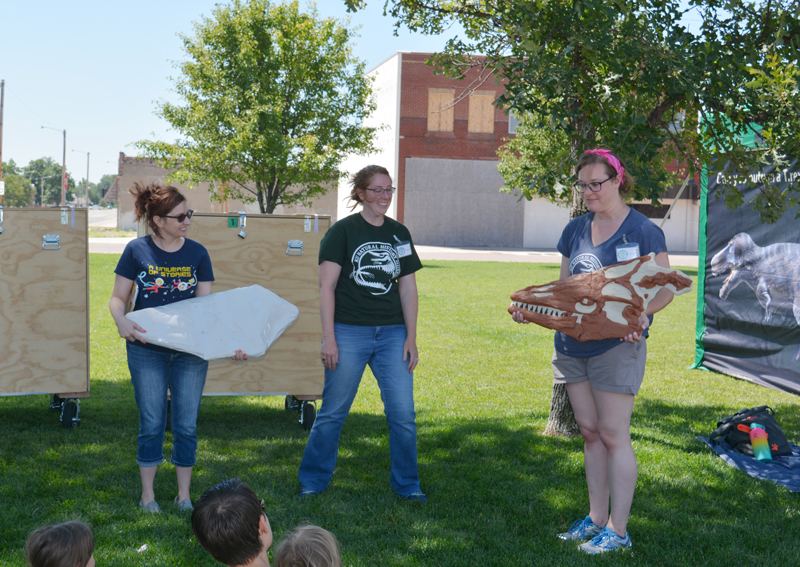
FOSSIL FUN: In summer 2019, KU Natural History Museum staff presented the Great Bend Public Library with a cast replica of Mosasaurus sp. skull that will support future fossil-related programming. (L to R) Jessica Ney, library youth services assistant, Eleanor Gardner, museum outreach and engagement coordinator, and Colleen MacGilvray, museum education coordinator.
“My favorite part of this paleontology-focused mobile museum program is the station with touchable real fossils and casts. You can see people’s eyes light up when they realize they are touching the vertebra of an 84 million-year-old mosasaur,” Gardner said.
It was important to the Hardys that the University of Kansas and the Natural History Museum be able to reach out to Kansans to expose young children to the possibilities that an education at KU could bring.
“We’re trying to wave a KU flag throughout the state in ways that it doesn’t always get waved,” Tom Hardy said.
Current Issue
Issue 38
Spring 2024
In this Spring 2024 issue, we meet faculty and student researchers who are uncovering clues about how organisms change, learn about exciting brain health developments at the KU ADRC, experience a unique study abroad program and get to know inspiring KU students, faculty and alumni.
